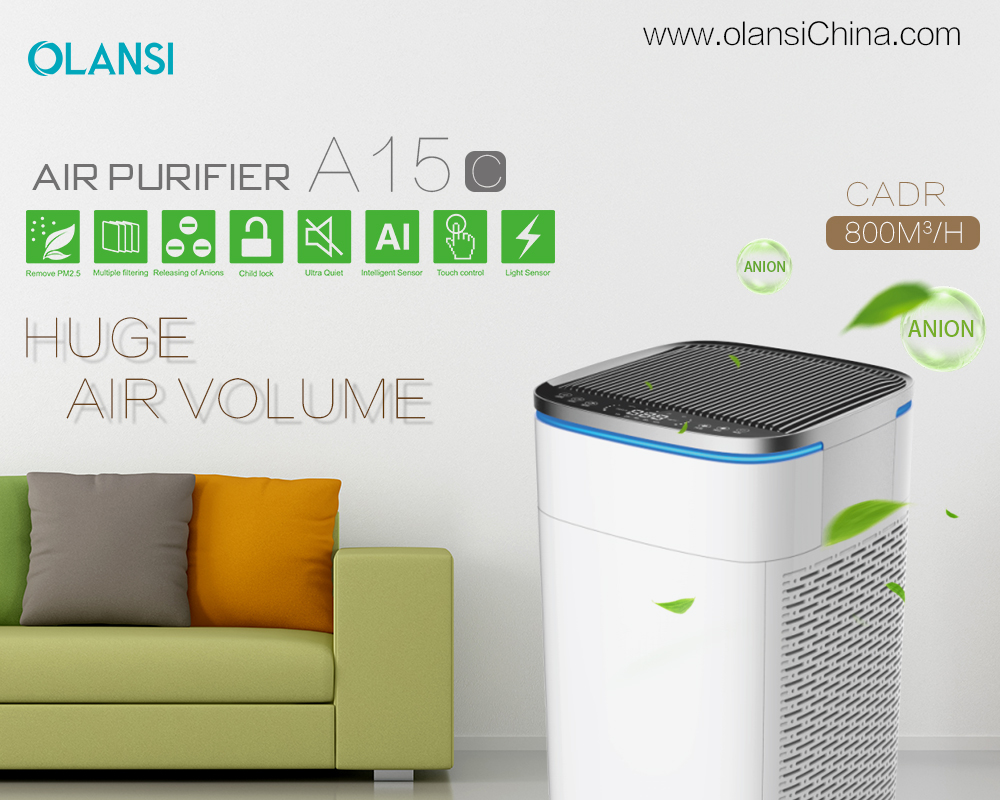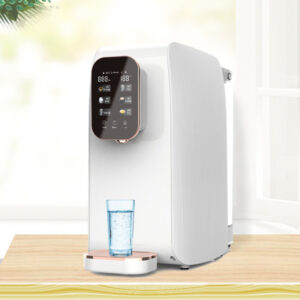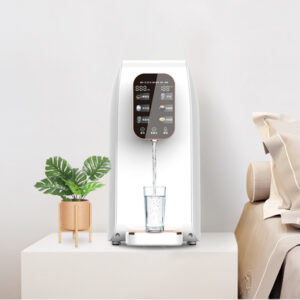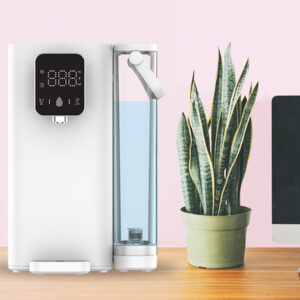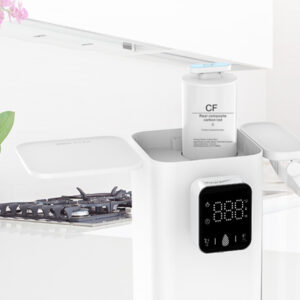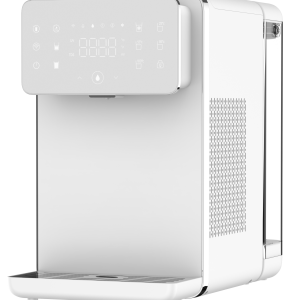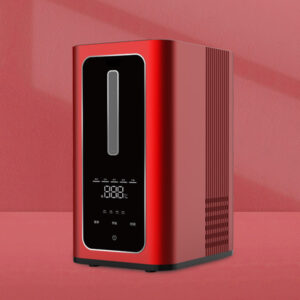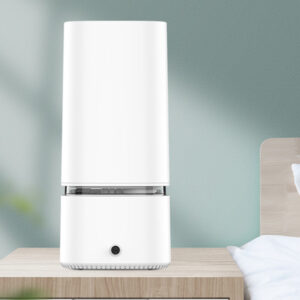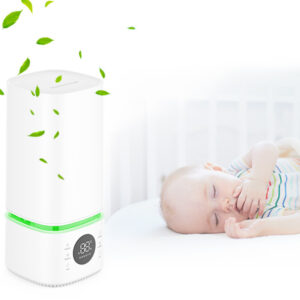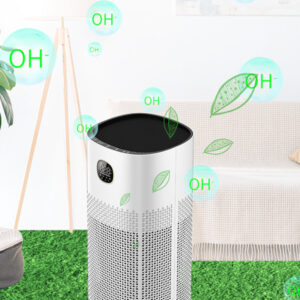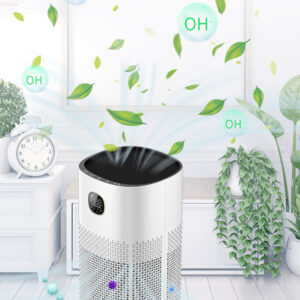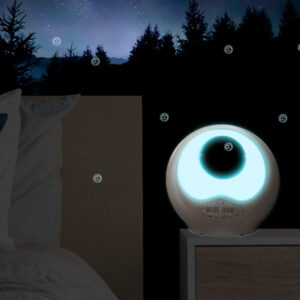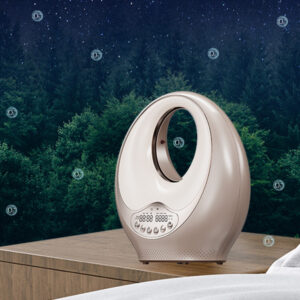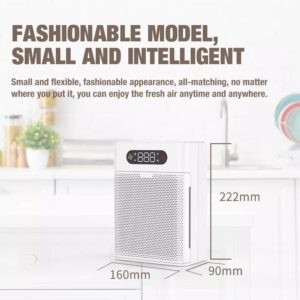Why Should You Select An Air Purifier For A Large Room?
Why Should You Select An Air Purifier For A Large Room?
In today’s world, where we spend a significant portion of our lives indoors, the quality of the air we breathe is more important than ever. Indoor air can harbor a surprising array of pollutants—dust, allergens, pet dander, volatile organic compounds (VOCs), and even airborne pathogens—that affect our health and comfort. This issue becomes even more pressing in large rooms, where the sheer volume of air and the variety of pollution sources amplify the challenge of maintaining clean, breathable air. Whether it’s a spacious living room, an open-plan office, or a conference hall, large rooms demand a tailored solution to ensure optimal air quality. This article explores why selecting an air purifier specifically designed for large rooms is not just a smart choice but an essential one. We’ll dive into the health benefits, technical considerations, real-world impacts, and practical tips to help you make an informed decision.
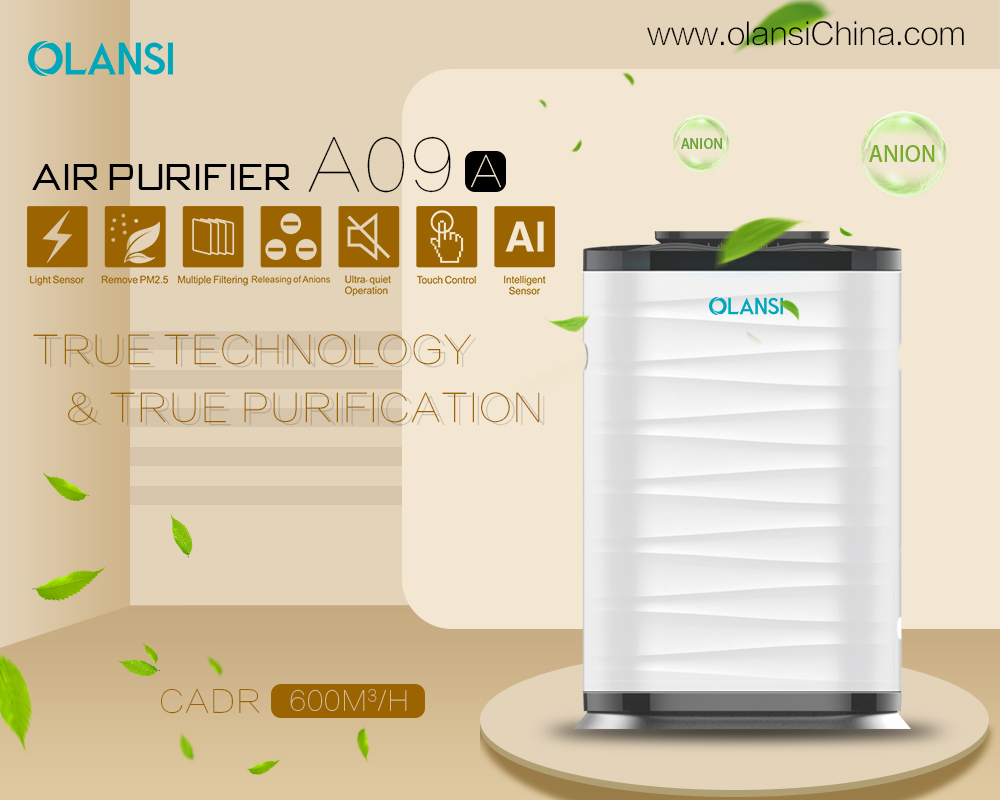
The Hidden Dangers Lurking in Your Air
Picture this: you step into your expansive living room, expecting a sanctuary of relaxation, only to be met with a stale, stuffy atmosphere. Or imagine working in a bustling open-plan office, where the air feels thick with the scent of printers, cleaning agents, and the collective breath of dozens of colleagues. These aren’t just minor inconveniences—they’re potential health hazards. Research has shown that indoor air can be up to five times more polluted than outdoor air, according to the Environmental Protection Agency (EPA). In large rooms—spaces over 400 square feet—these problems are magnified due to greater air volume, more pollution sources, and often poorer circulation. An air purifier designed for large rooms can transform this environment, offering cleaner, healthier air. But why exactly is this necessary, and what makes it so critical in bigger spaces? Let’s break it down.
Why Air Purification Matters—Especially in Large Rooms
Air purifiers are devices that filter out contaminants from the air, improving indoor air quality and safeguarding our well-being. While they’re beneficial in any setting, their importance skyrockets in large rooms for several key reasons:
1. Greater Pollutant Load
Large rooms tend to have more sources of pollution. In a family living room, you might encounter pet dander, dust from furniture, cooking odors wafting from the kitchen, or smoke from a fireplace. In a workplace, printers emit fine particles, furniture off-gasses VOCs, and a higher concentration of people increases the presence of germs and carbon dioxide. The more pollutants in play, the greater the need for a robust air purification system to keep the air clean.
2. Uneven Air Circulation
In smaller spaces, air tends to move more uniformly, aided by natural ventilation or HVAC systems. But in large rooms, air circulation can be inconsistent, leading to “dead zones” where stale or polluted air accumulates. Corners, areas far from windows, or spots behind furniture can become traps for contaminants. An air purifier ensures that clean air reaches every part of the room, combating these pockets of poor quality.
3. Health Risks Amplified
Poor air quality is linked to a range of health issues, from allergies and asthma to respiratory infections and even long-term conditions like heart disease. In large rooms—where people often spend extended periods, such as living areas or offices—the exposure to harmful particles increases. For example, allergens like pollen or dust mites can trigger symptoms, while airborne viruses can spread more easily in crowded spaces. An air purifier reduces these risks by capturing particles and pathogens, making the environment safer for everyone.
4. Odor Management
Large rooms can trap and amplify odors, whether it’s the lingering smell of last night’s dinner, a pet’s presence, or cigarette smoke. These odors don’t just affect comfort—they can signal the presence of harmful gases or VOCs. An air purifier equipped to handle odors can neutralize them, leaving the space fresh and inviting.
Technical Considerations: What Makes an Air Purifier Suitable for Large Rooms?
Not all air purifiers are created equal, and selecting one for a large room requires attention to specific features. Here’s what to look for:
1. Clean Air Delivery Rate (CADR)
The Clean Air Delivery Rate (CADR) measures how efficiently an air purifier removes pollutants like smoke, pollen, and dust. It’s expressed as a number (e.g., CADR 300), indicating the cubic feet of air cleaned per minute. For large rooms, a higher CADR is essential to handle the greater air volume. A general guideline is to choose a purifier with a CADR at least two-thirds of the room’s square footage. For a 500-square-foot room, aim for a CADR of 333 or higher. This ensures the device can cycle and clean the air effectively within a reasonable timeframe.
2. Filter Types
Different pollutants require different filtration technologies. Here are the key types to consider:
HEPA Filters: High-Efficiency Particulate Air (HEPA) filters are the gold standard for capturing tiny particles—think dust, pollen, pet dander, and even some bacteria. True HEPA filters trap 99.97% of particles as small as 0.3 microns, making them a must-have for allergy sufferers in large rooms.
Activated Carbon Filters: These excel at adsorbing odors, gases, and VOCs. In a large room with cooking smells or chemical emissions, this filter is a game-changer.
Pre-Filters: These capture larger particles like hair or dust, prolonging the life of the HEPA filter. In a busy large room, a pre-filter can reduce maintenance frequency.
A multi-stage filtration system combining these types offers the best protection against the diverse pollutants found in bigger spaces.
3. Noise Level
Large rooms serve various purposes—relaxation, work, socializing—that often require a quiet environment. An air purifier that’s too loud can be disruptive. Look for models with a “quiet mode” or those designed to operate at low decibel levels (below 50 dB is ideal for minimal disturbance). Some units even adjust noise based on the room’s activity, making them versatile for different settings.
4. Energy Efficiency
Since large rooms may require the air purifier to run continuously, energy consumption is a factor. An energy-efficient model—preferably with an Energy Star certification—can keep operating costs down without sacrificing performance. This is especially important in spaces where the purifier works overtime to maintain air quality.
5. Design and Portability
In a large room, aesthetics and practicality matter. A sleek, modern air purifier can blend into your decor, while a bulkier, industrial model might prioritize power over style. Portability is also key—units with handles or wheels allow you to reposition them as needed, whether to target a specific area or move them between rooms.
Real-Life Examples: Air Purifiers in Action
To see the tangible benefits, let’s explore how air purifiers have transformed large spaces:
Case Study 1: The Peterson Family Living Room
The Petersons’ 600-square-foot living room was a hub of activity, with two dogs and frequent family gatherings. Despite regular vacuuming, pet dander and odors persisted, and their daughter’s allergies worsened. After installing an air purifier with a CADR of 400, a HEPA filter, and an activated carbon layer, they noticed a dramatic shift. Within days, the air felt fresher, the dog smells vanished, and their daughter’s sneezing subsided. The purifier’s quiet operation even allowed it to run during movie nights unnoticed.
Case Study 2: Horizon Tech’s Open Office
Horizon Tech’s 1,000-square-foot office housed 40 employees, along with printers and copiers that churned out fine particles daily. Complaints about stuffiness and frequent colds were common. The company installed two high-CADR air purifiers with HEPA filtration. Over three months, sick days dropped by 25%, and employees reported feeling more alert. The purifiers’ smart sensors adjusted settings based on air quality, proving their worth in a dynamic, large space.
These examples underscore how air purifiers can address specific challenges in large rooms, delivering measurable improvements in health and comfort.
Tips for Choosing the Right Air Purifier for Your Large Room
With so many options, picking the perfect air purifier can feel daunting. Here’s a step-by-step guide:
Measure Your Space: Calculate the square footage of your room. For large rooms (over 400 square feet), ensure the purifier’s capacity matches or exceeds this size.
Match CADR to Room Size: Aim for a CADR that’s at least two-thirds of your room’s area. For a 600-square-foot space, a CADR of 400+ is ideal.
Identify Key Pollutants: Tailor your choice to your needs. Pets? Prioritize HEPA. Cooking odors? Add activated carbon. Smokers? Look for both.
Check Noise Levels: Test or research decibel ratings, especially if the room is for quiet activities like sleeping or working.
Factor in Maintenance: Filters need replacing every 6-12 months, depending on use. Check replacement costs and availability upfront.
Explore Smart Features: Models with air quality sensors, remote controls, or app integration can enhance convenience in large spaces.
Debunking Misconceptions About Air Purifiers
Some hesitate to invest in air purifiers due to common myths. Let’s set the record straight:
“They’re Too Expensive.” Yes, there’s an initial cost (often $100-$500 for a large-room model), but the health benefits—fewer doctor visits, better sleep—can offset this over time. Energy-efficient units also minimize running costs.
“They Don’t Work.” Modern air purifiers are highly effective when matched to the room size and pollutant type. Studies, like those from the American Lung Association, confirm their ability to reduce airborne allergens and particles.
“I’ll Just Open a Window.” Ventilation helps, but it can bring in outdoor pollutants like pollen or smog, especially in urban areas. Air purifiers offer controlled, consistent cleaning.
Why Air Purifiers Beat Other Methods
Alternatives like opening windows or adding houseplants have their merits, but they fall short in large rooms:
Ventilation: Outdoor air quality varies, and allergens or humidity can worsen indoor conditions.
Plants: While they absorb some CO2 and toxins, their impact is negligible in big spaces, and they require upkeep.
Air purifiers, by contrast, target specific contaminants with precision, delivering reliable results regardless of external factors.
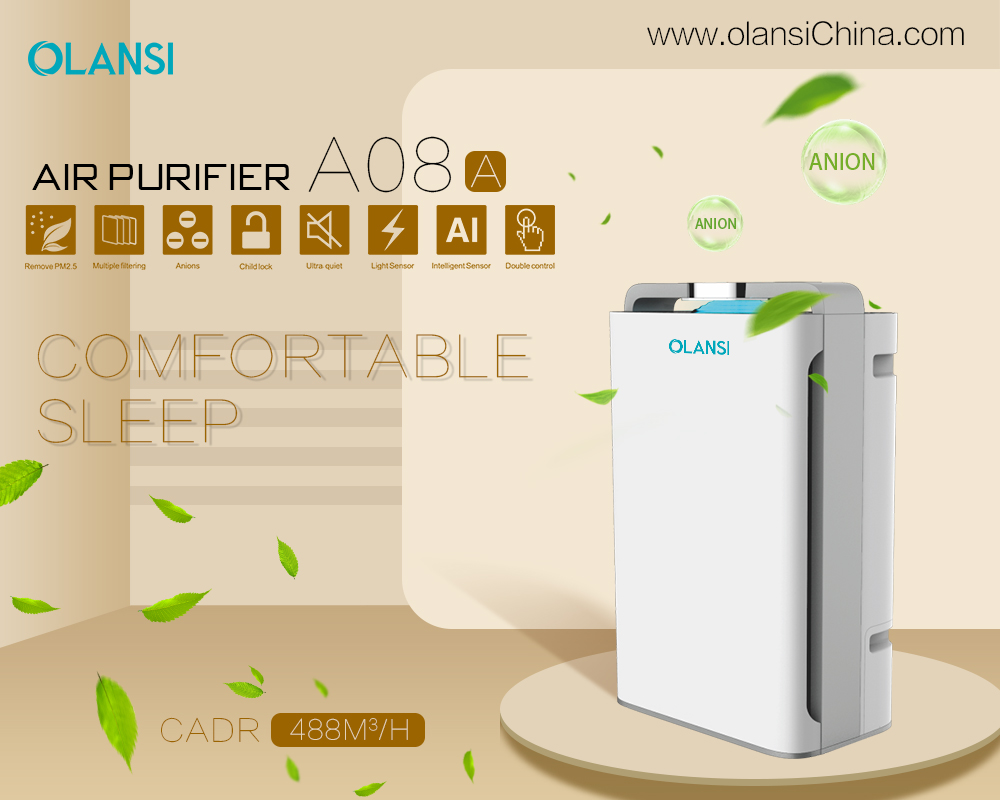
Conclusion: Breathe Easier in Your Large Room
Selecting an air purifier for a large room is an investment in your health, comfort, and quality of life. From tackling a higher pollutant load to ensuring even air circulation, these devices address the unique challenges of bigger spaces. By focusing on key features like CADR, filter types, and energy efficiency, you can find a model that fits your needs perfectly. Real-world examples and research back up their effectiveness, while practical tips make the choice straightforward. Don’t settle for stuffy, polluted air—take control with an air purifier and enjoy the fresh, clean environment you deserve.
For more about why should you select an air purifier for a large room, you can pay a visit to Olansi at https://www.olansgz.com/product-category/air-purifier/ for more info.


